Example results
In the bar charts results from calculations for a selection of refrigerants are visualised. For every refrigerant, two parallel bars are shown, left and right aside each other, for two operating conditions.
Thus, in the bar charts it becomes visible how the refrigerants perform relative to each other and how each refrigerant might give different results at the two different conditions chosen. Through this it can be seen how a refrigerant changes in refrigeration capacity, efficiency and discharge gas temperature if the superheat increases or if conditions change from high superheat with internal heat exchange to 2-stage economised operation.
In the following diagram curves it is shown how efficiency changes with evaporation, condensation or superheated suction gas temperature.
Depending on the source of the refrigerant property data, results might look slightly different.
Medium temperature refrigeration
The volumetric refrigeration capacity differs strongly between the refrigerants, from around 0,7·106 J/m3 with R600a up to around 3,5·106 J/m3 with R410A. For a given refrigeration capacity demand, R600a would need about 5 times the volume flow of R410A.
With R134a, R404A, the hydrocarbons and most of the other refrigerants, the refrigeration capacity increases slightly when changing from the low to the high useful superheat. With R717 (ammonia) and R410A it drops a little, with R22 it stays stable.
The same way the COP changes with the useful superheat. However, here the values are much closer to each other than with the volumetric refrigeration capacity. R404A with low superheat is at approximately 3.1 in COP, R600a with high useful superheat at around 3.8. Most refrigerants are closer together. A refrigerant with lower volumetric refrigeration capacity can be more efficient – these two values are not linked directly together.
The isentropic discharge gas temperature has to be limited at around 105°C to compare to a real life temperature of around 140 .. 150°C as limit. Thus, R717 can not be operated in single stage compression at these conditions and R410A neither, at least not at high superheat.
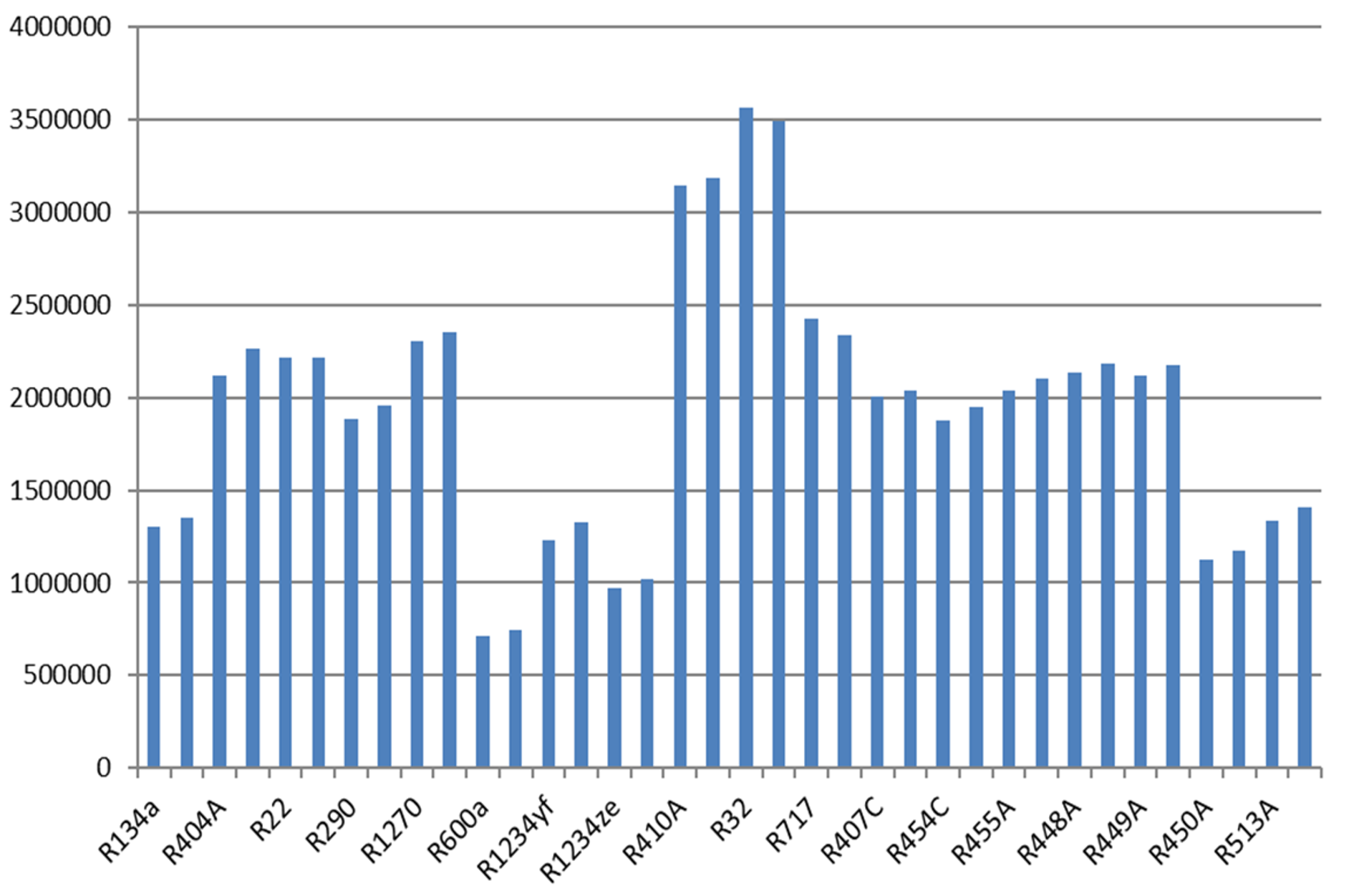
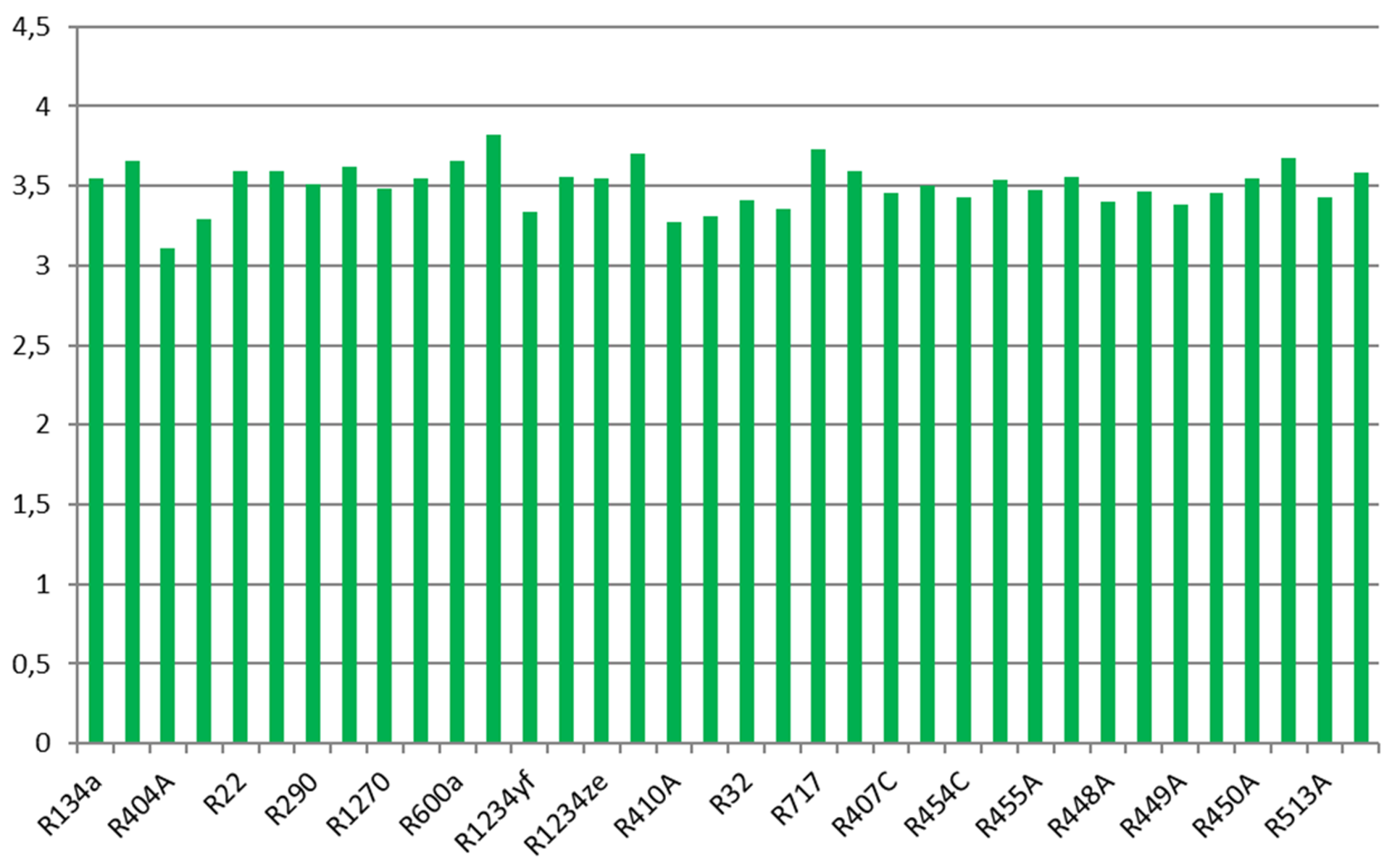
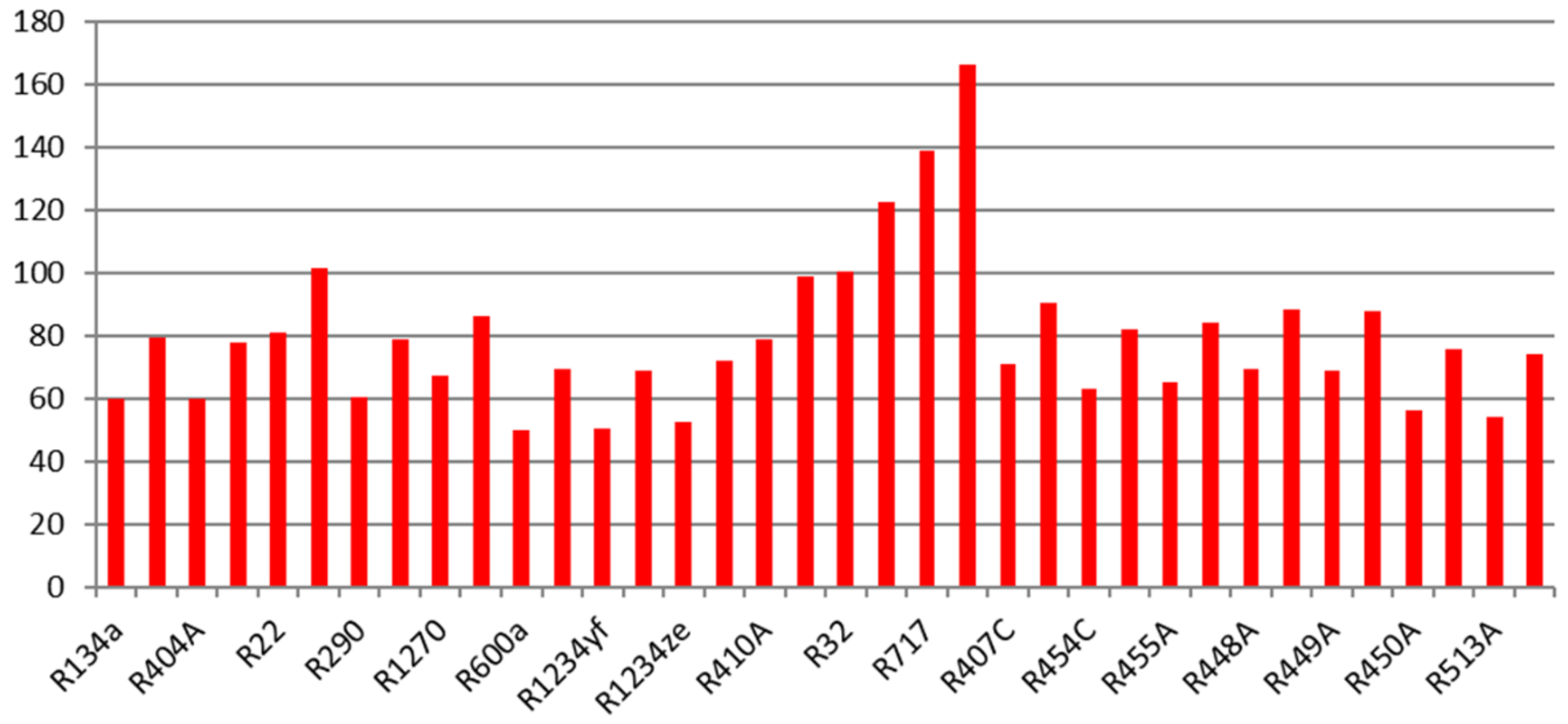
Low temperature refrigeration
Here the volumetric refrigeration capacity varies similarly, ranging from 0,23 up to around 1,4·106 J/m3, the COP even a bit more than for MT, from about 1,8 up to 2,4. Here the difference in superheat is larger and thus its change impact is higher. The relative behaviour is similar to the calculations for medium temperature refrigeration, with increased differences.
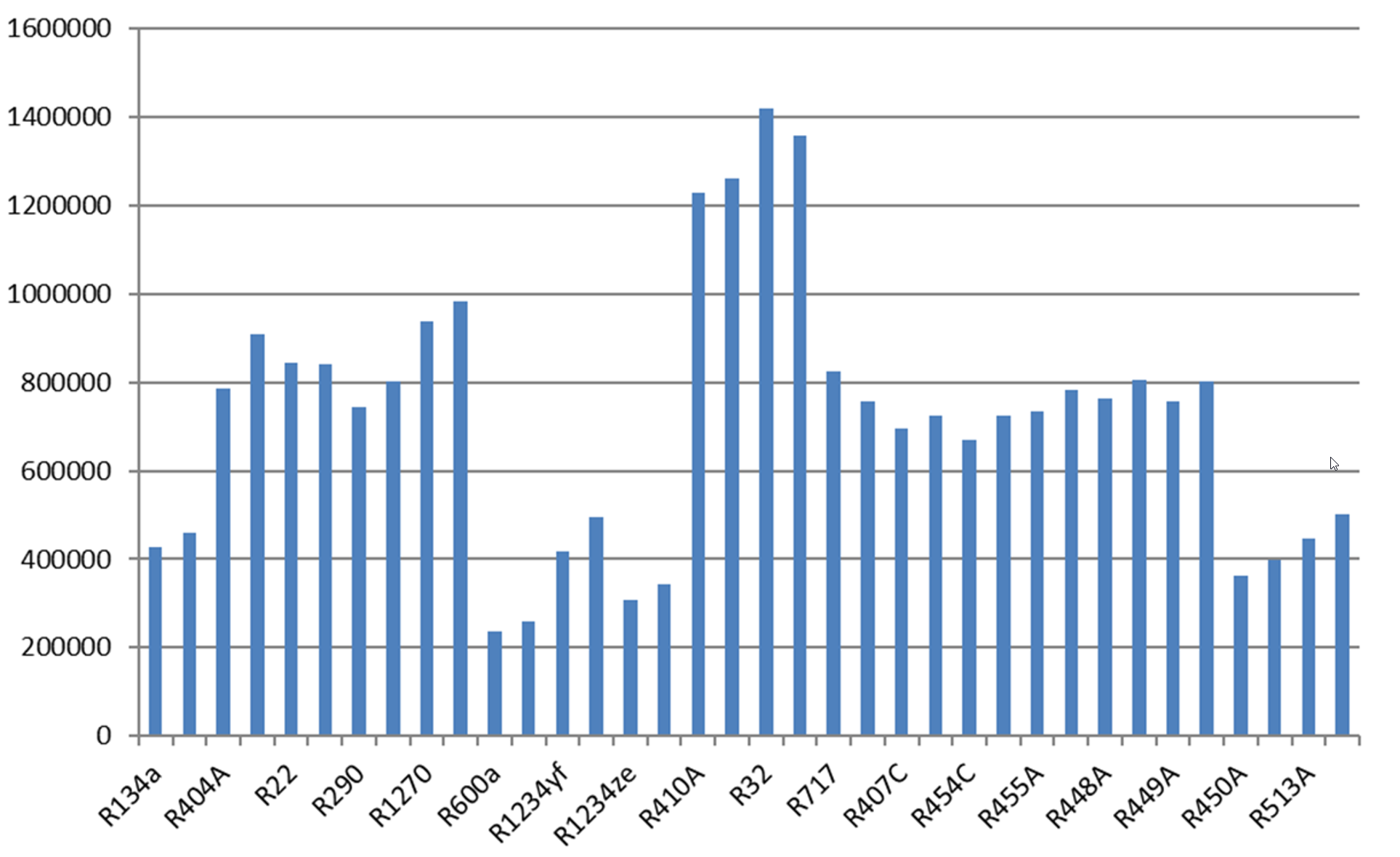
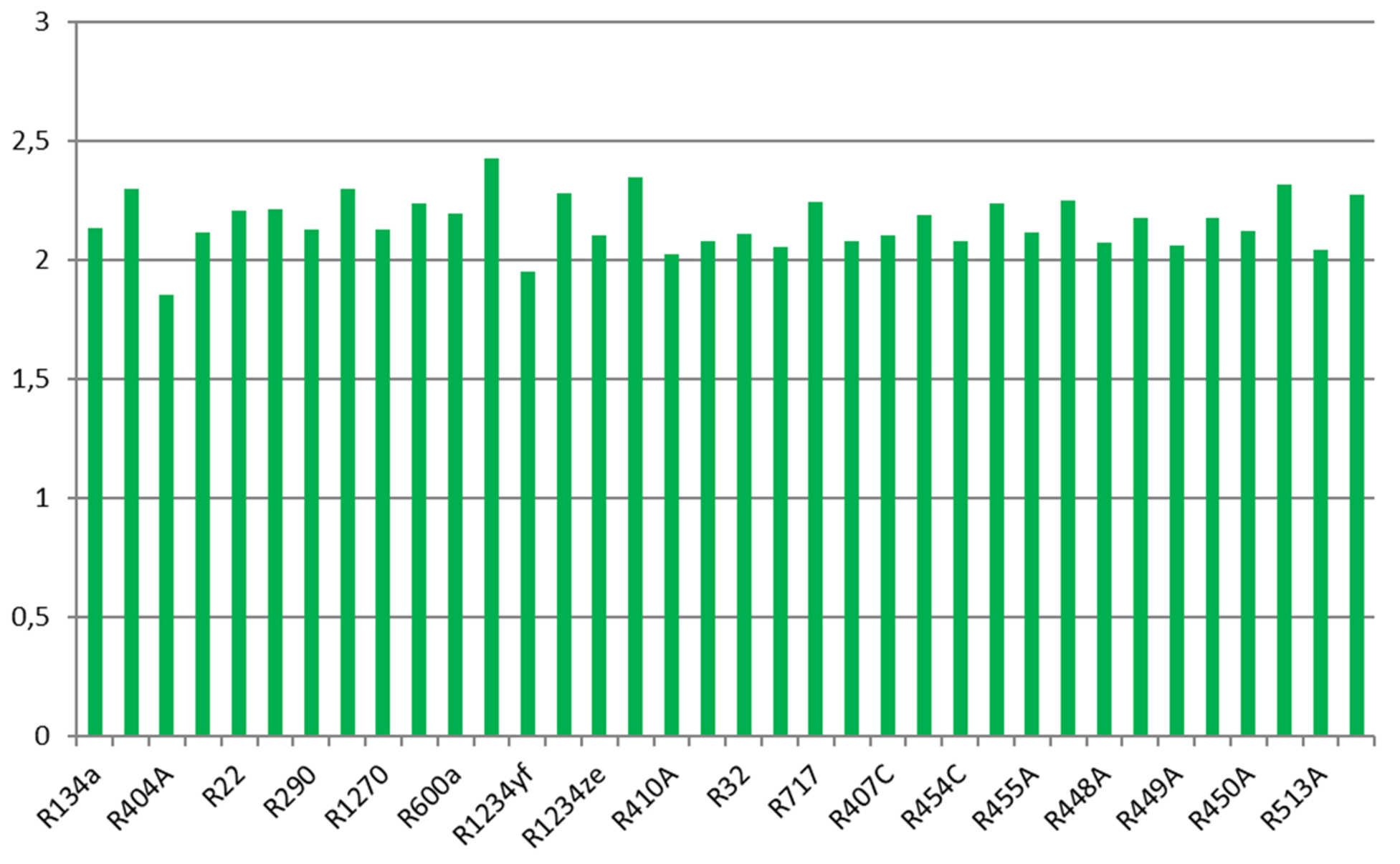
Quite interesting here is that refrigerants like R600a, R1234ze(E) and R513A can deliver high theoretical values for the COP at low temperature application, but are usually not applied there because they would operate below ambient pressure.
These refrigerants additionally have no problems with high discharge gas temperature. Because of the high pressure ratio and thus increased discharge gas temperature at low temperature refrigeration, a single stage compression without additional cooling is questionable for several of the refrigerants, and not possible for R410A, R32 and of course R717.
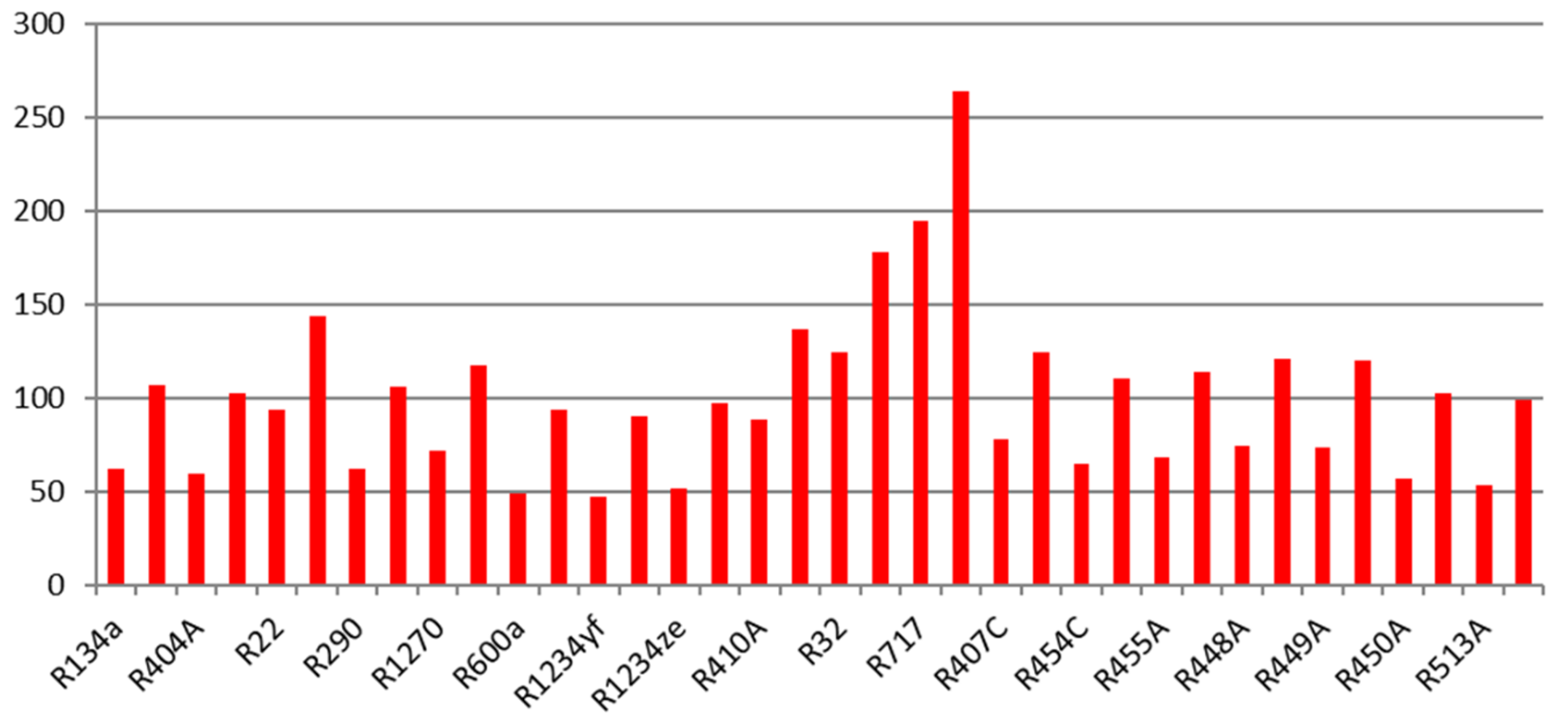
Low temperature refrigeration with economiser
In these figures the left bar per refrigerant shows the value for operation with internal heat exchanger, the right bar shows operation with economiser. With all refrigerants the economiser operation shows the following:
- The volumetric refrigeration capacity increases significantly – by about 30%.
- The efficiency COP increases significantly – by about 10 .. 15%.
- The isentropic discharge gas temperature drops significantly.
The advantages for the energy consumption and the application limits are so clear that it is not easy to explain why many low temperature refrigeration systems do not operate with economiser. As the system layout gets more complex, the costs might be significantly higher and probably the risk for system failures is higher. A life cycle cost evaluation is a good idea here. Large scale refrigeration installations and heat pumps are typically operated with economiser or with 2-stage compression. For smaller refrigeration capacity, on top of the costs, the availability of components optimised for this can be problematic. Here is some future potential.
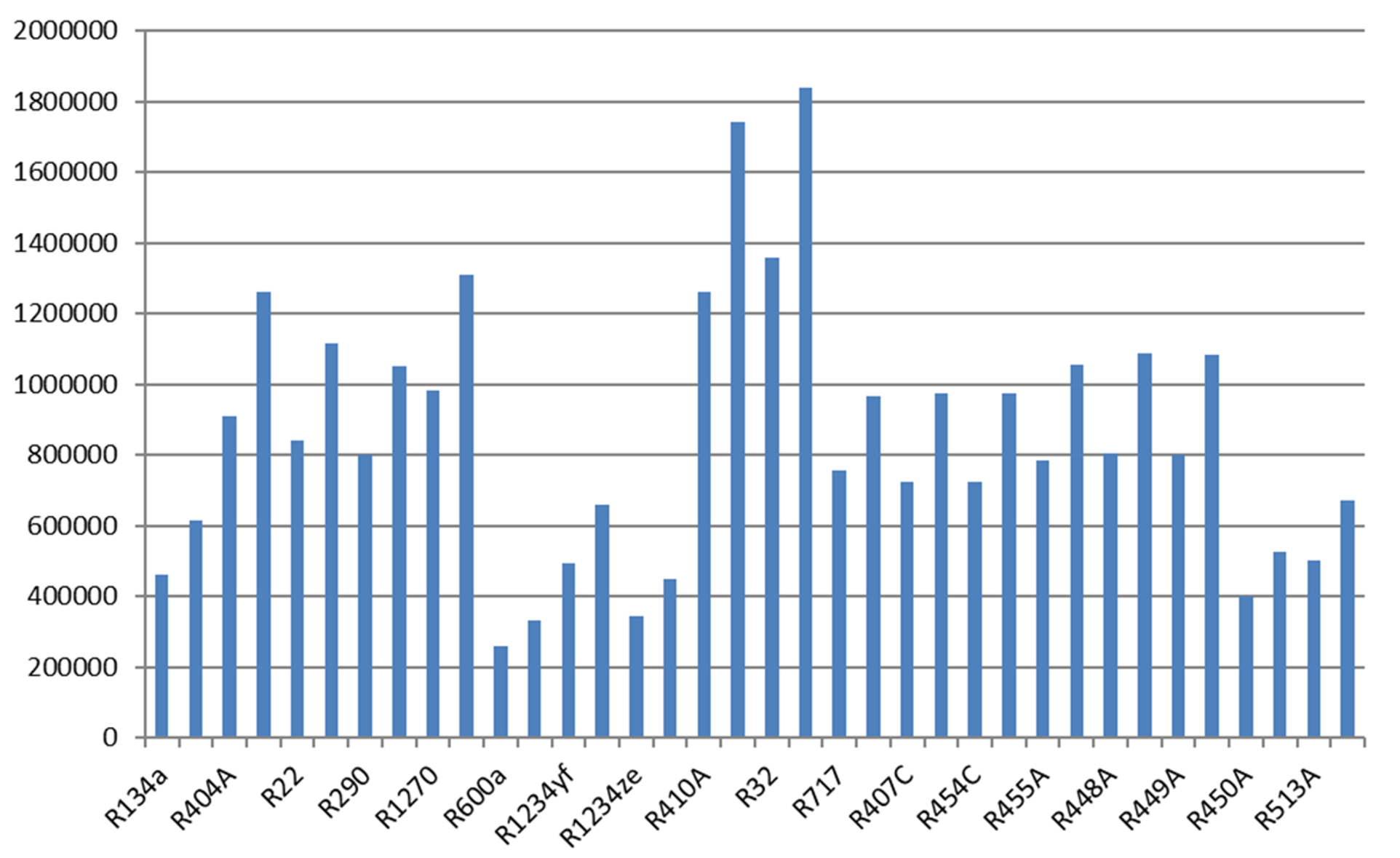
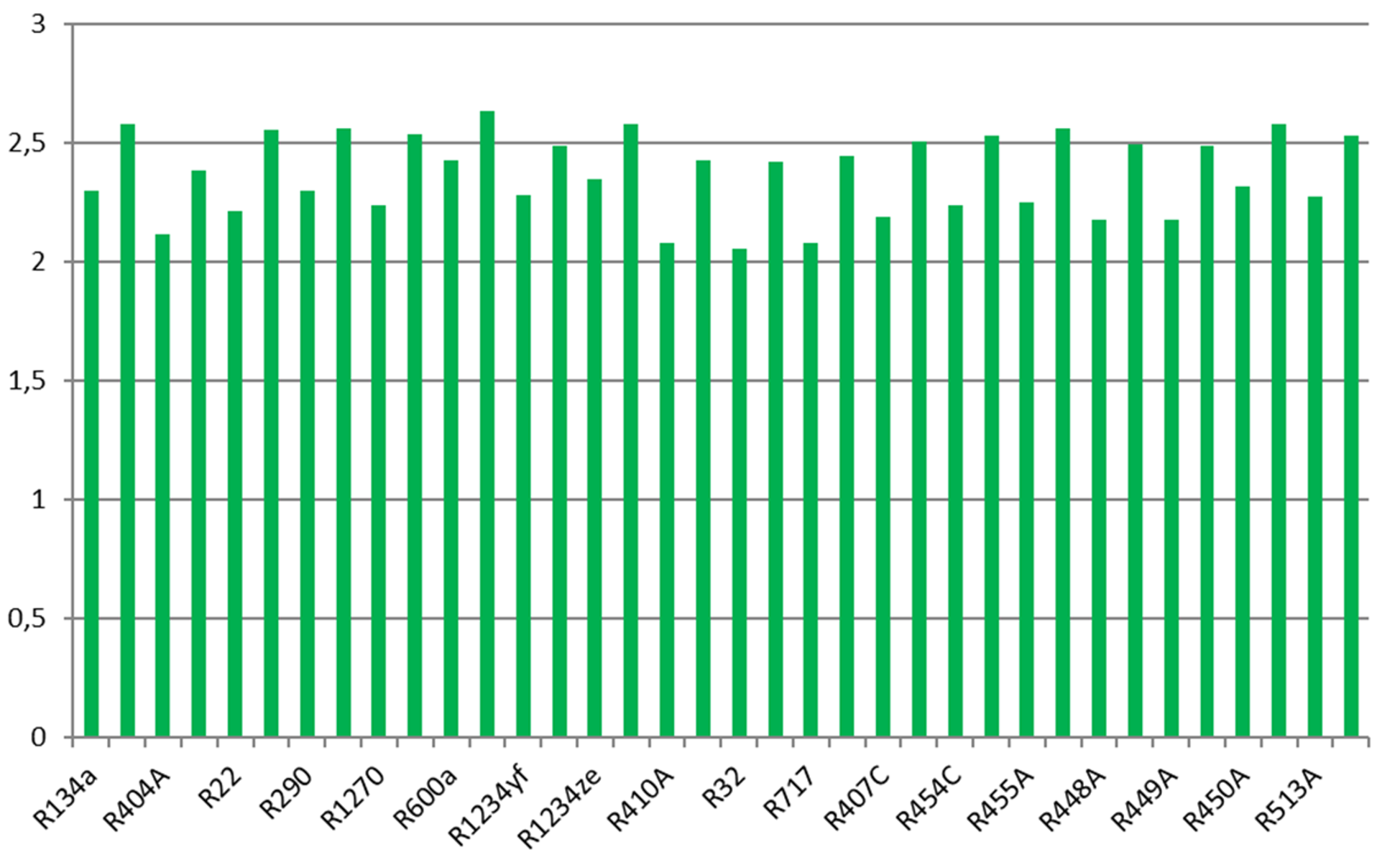
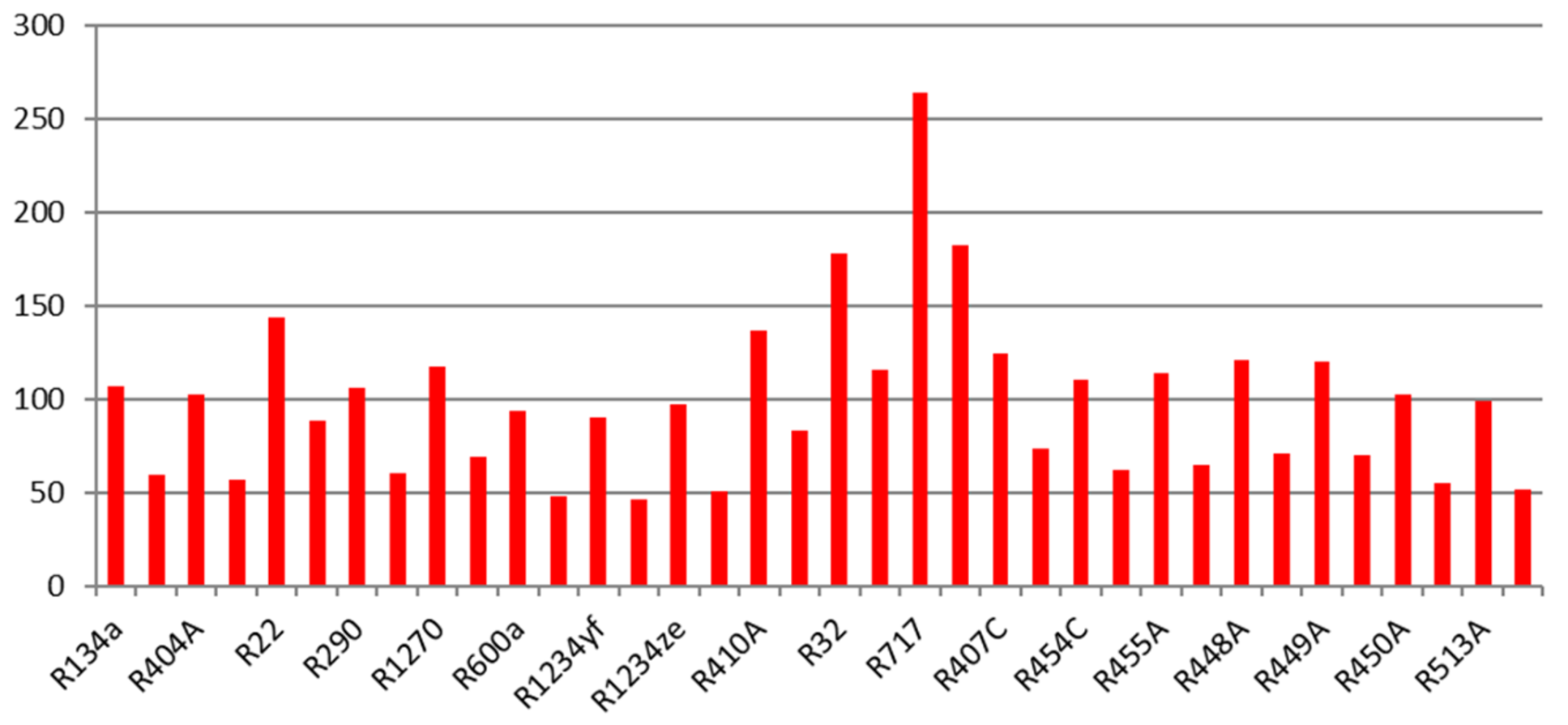
Seasonal energy performance ratio SEPR
For the seasonal evaluation, for a full year, the efficiency of a theoretical air cooled condensing unit is calculated with the rules of EN13215. The condensing temperature is falling with the ambient temperature. Following the temperature bins of the standardised year, the weight is more on the lower condensing temperatures than compared to the standard rating points for compressors. As the refrigeration capacity changes with the condensing temperature, here only the SEPR is shown.
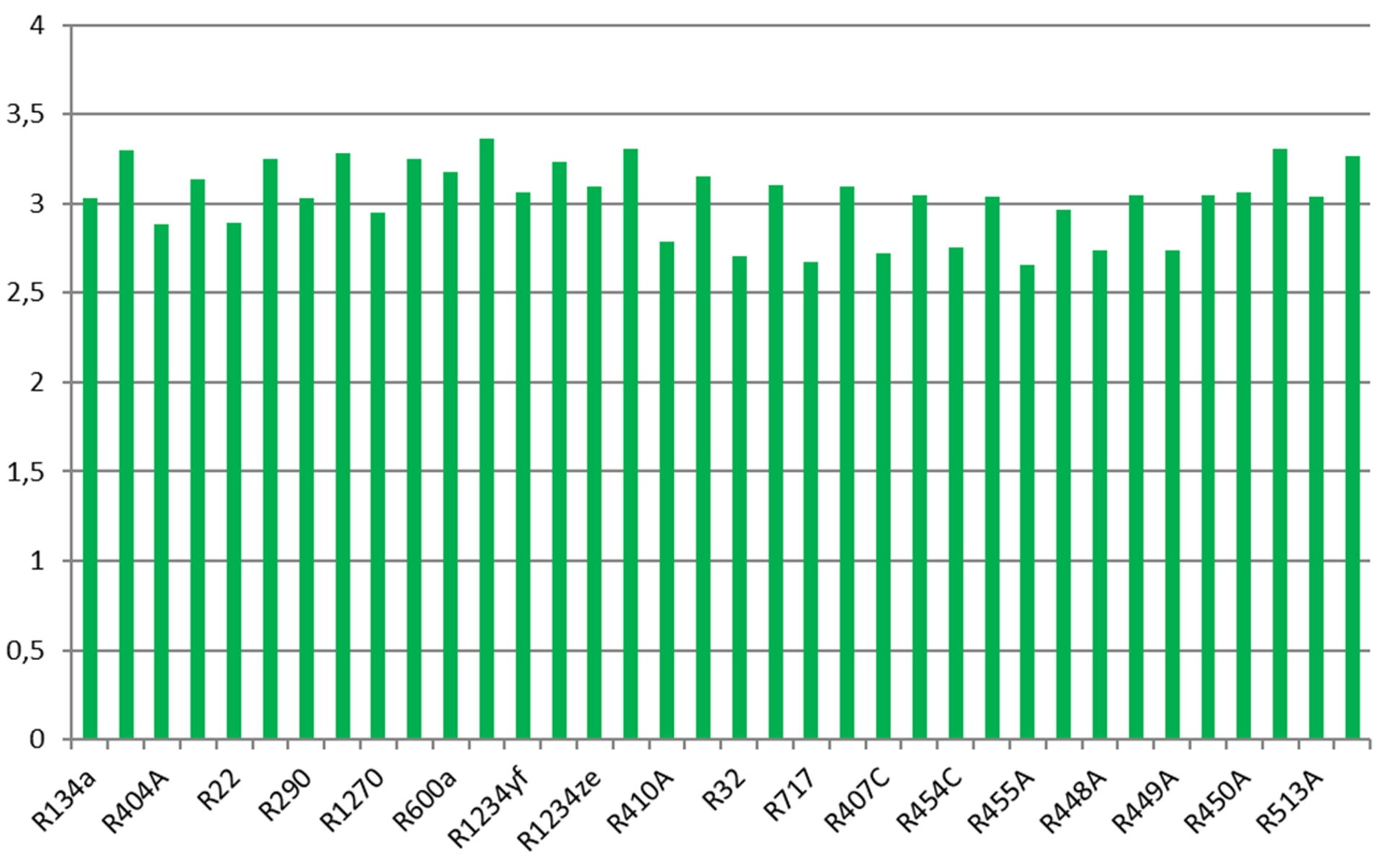
Similar to the previous comparison, the efficiency increases with economiser operation, but less than before. The SEPR values of R404A are now not so clearly below the others, as the differences get smaller at low condensing temperatures. The refrigerants with temperature glide seem to drop a bit more here, but this might also be due to the simplifications of this calculation method.
This way of comparing refrigerants has the potential to be closer to reality, but also has some more uncertainty due to additional assumptions to be made for the refrigeration system and the operation over the full year.
Variation of conditions
From the comparison at different standard operating conditions it is visible that the differences between refrigerants are varying and that the amount of superheat has some impact. Thus, in the following these values are varied:
- Evaporation temperature, at constant condensing temperature, superheat and subcooling
- Condensing temperature, at constant evaporation temperature, superheat and subcooling
- Superheat, at constant evaporation temperature, condensing temperature and subcooling
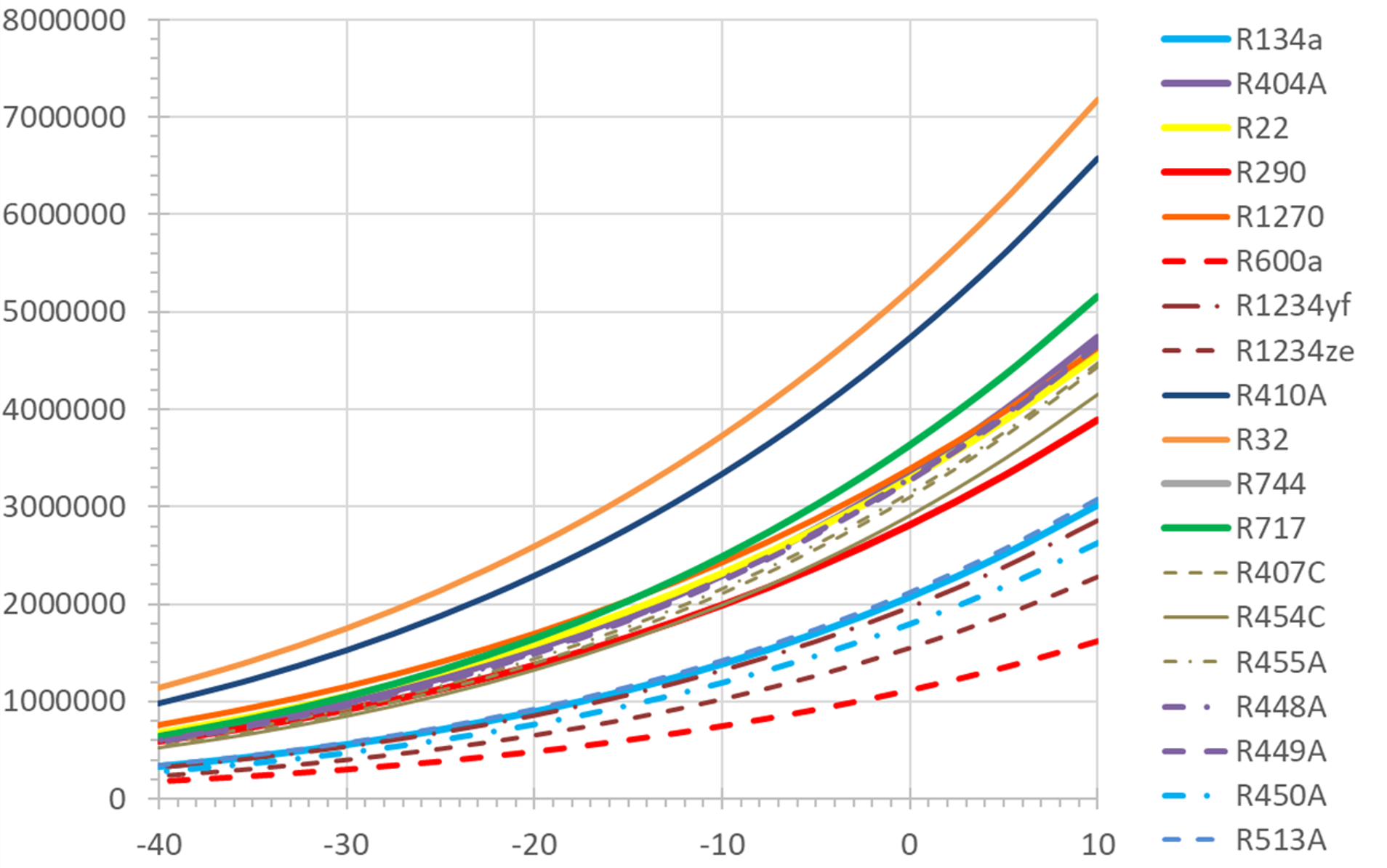
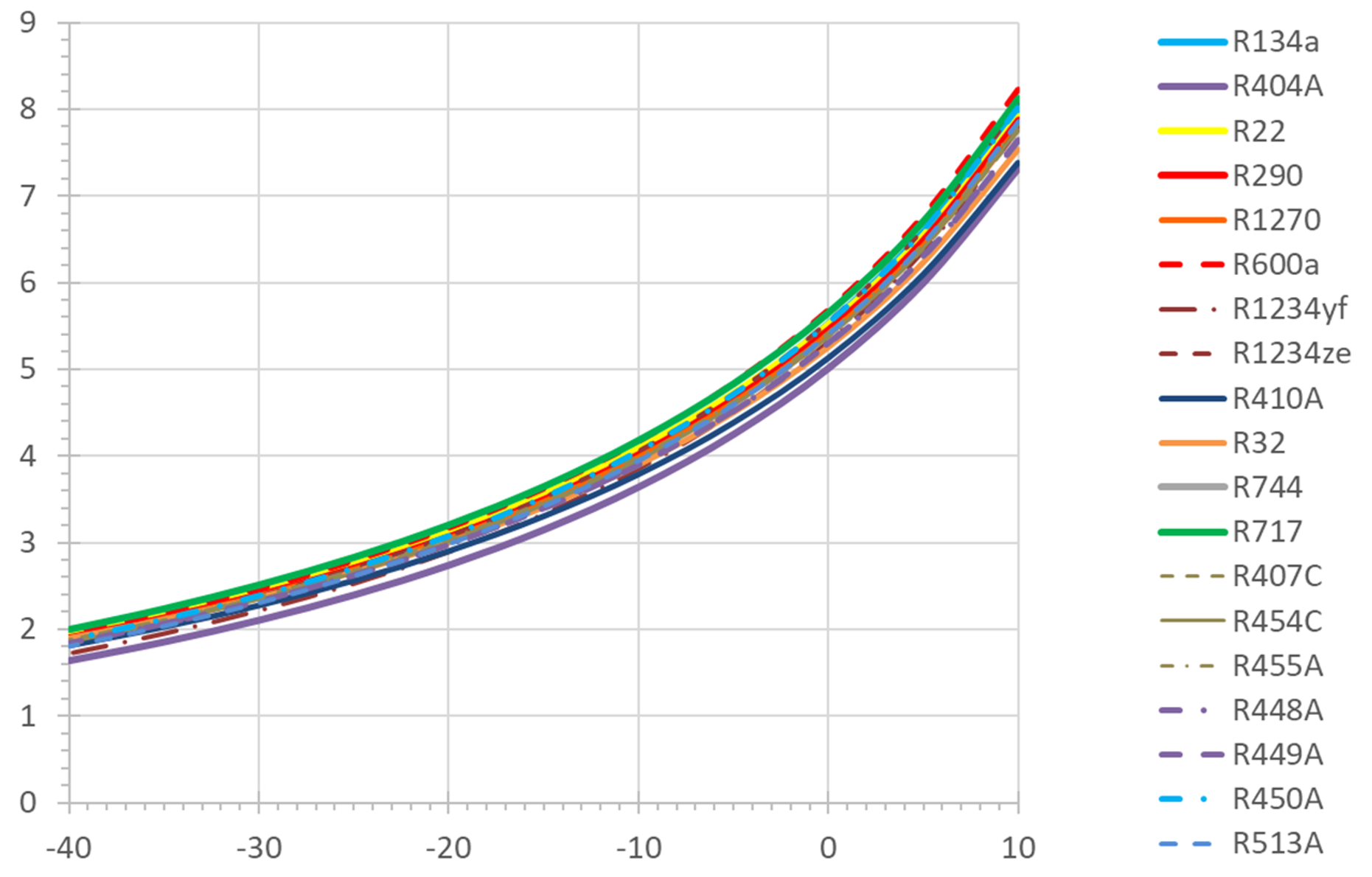
The refrigeration capacity varies similarly over the evaporation temperature for all considered refrigerants if the capacity change is calculated in %/K. The set of curves opens continuously with increasing values. Only propane and propene have a slightly lower increase over the temperature: The other way, they loose slightly less capacity with decreasing evaporation temperature.
The COP curves show values increasing with evaporation temperature, almost exactly in parallel for all considered refrigerants. At the chosen conditions, the curves vary approximately +/-5% from the average.
From this, it can be concluded that pressure drops on the suction side, in the suction line, inside the internal heat exchanger or in valves, or the more or less generous selection of the evaporator, have very similar impact for all considered refrigerants. This means: An additional pressure drop of 5% or similar to 2 K evaporation temperature will cause the same efficiency loss for all these refrigerants.
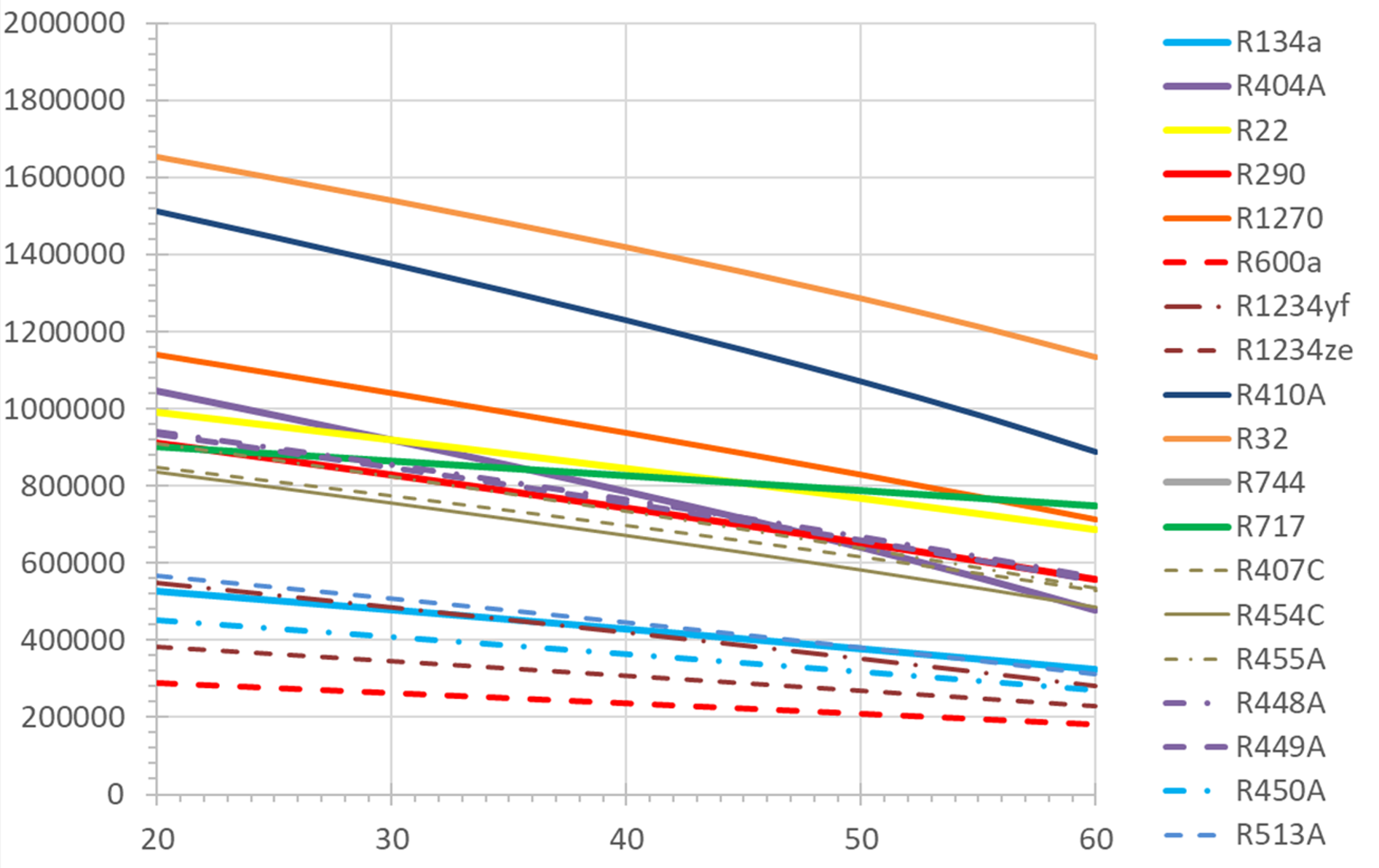
The variation of the condensing temperature at constant evaporation temperature, superheat and subcooling delivers a different picture: The refrigeration capacity decreases with increasing condensing temperature for all refrigerants. The impact is largest for R404A, but also strong for R410A. This would certainly be caused by the rather low critical temperature of these two refrigerants. Coming closer to the critical temperature, the enthalpy difference of condensation decreases and with this, also the available enthalpy difference for evaporation. Thus, these two can not really be recommended for high condensation temperature, meaning hot countries. The decrease effect is smallest for R717, meaning this one would be well suited for air conditioning systems in hot countries. With the other refrigerants, the individual differences are smaller.
The efficiency COP shows a similar picture: The COP decreases with increasing condensing temperature. The strongest change is for R404A, the lowest for R717. Most other refrigerants behave quite similar to each other.
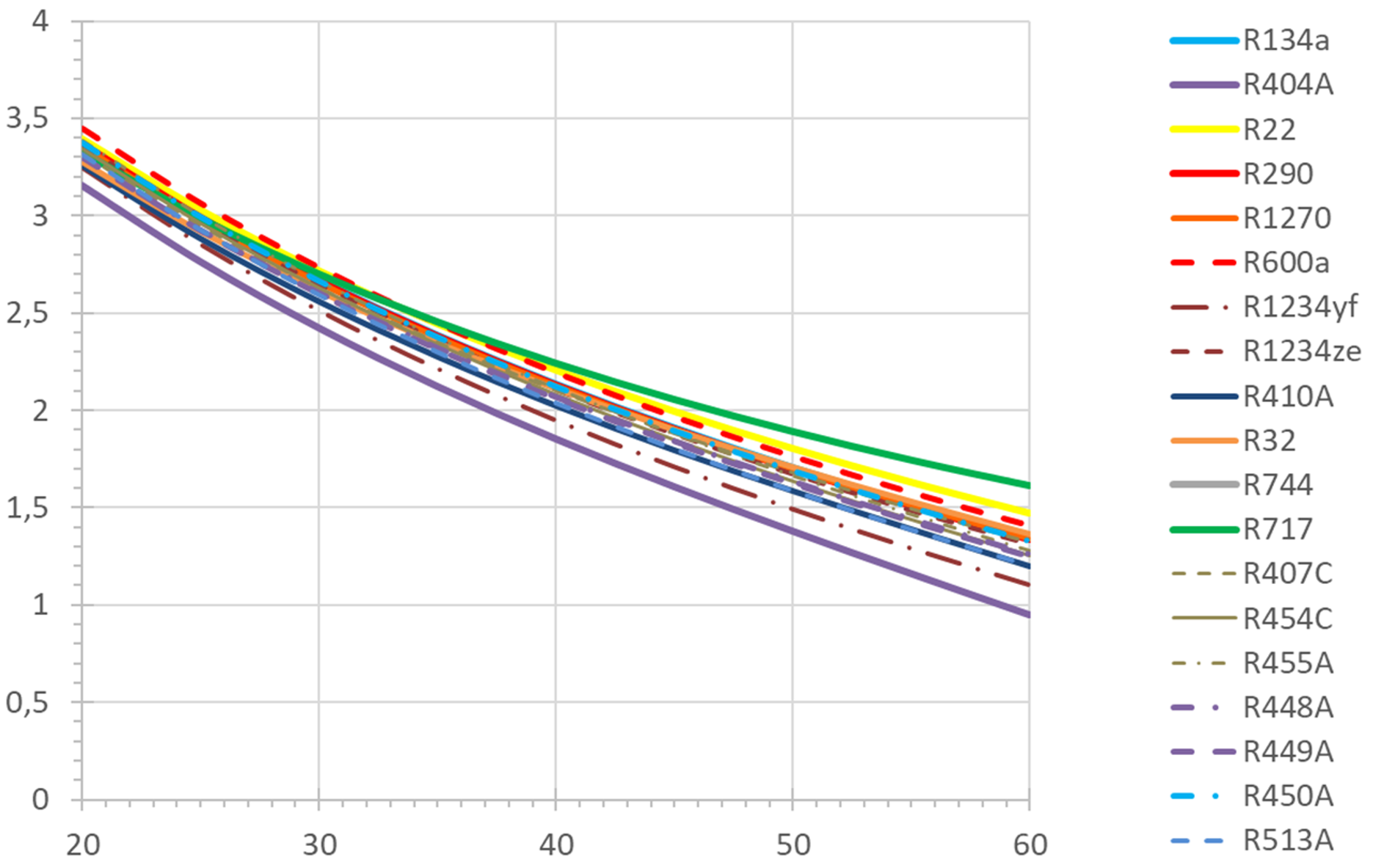
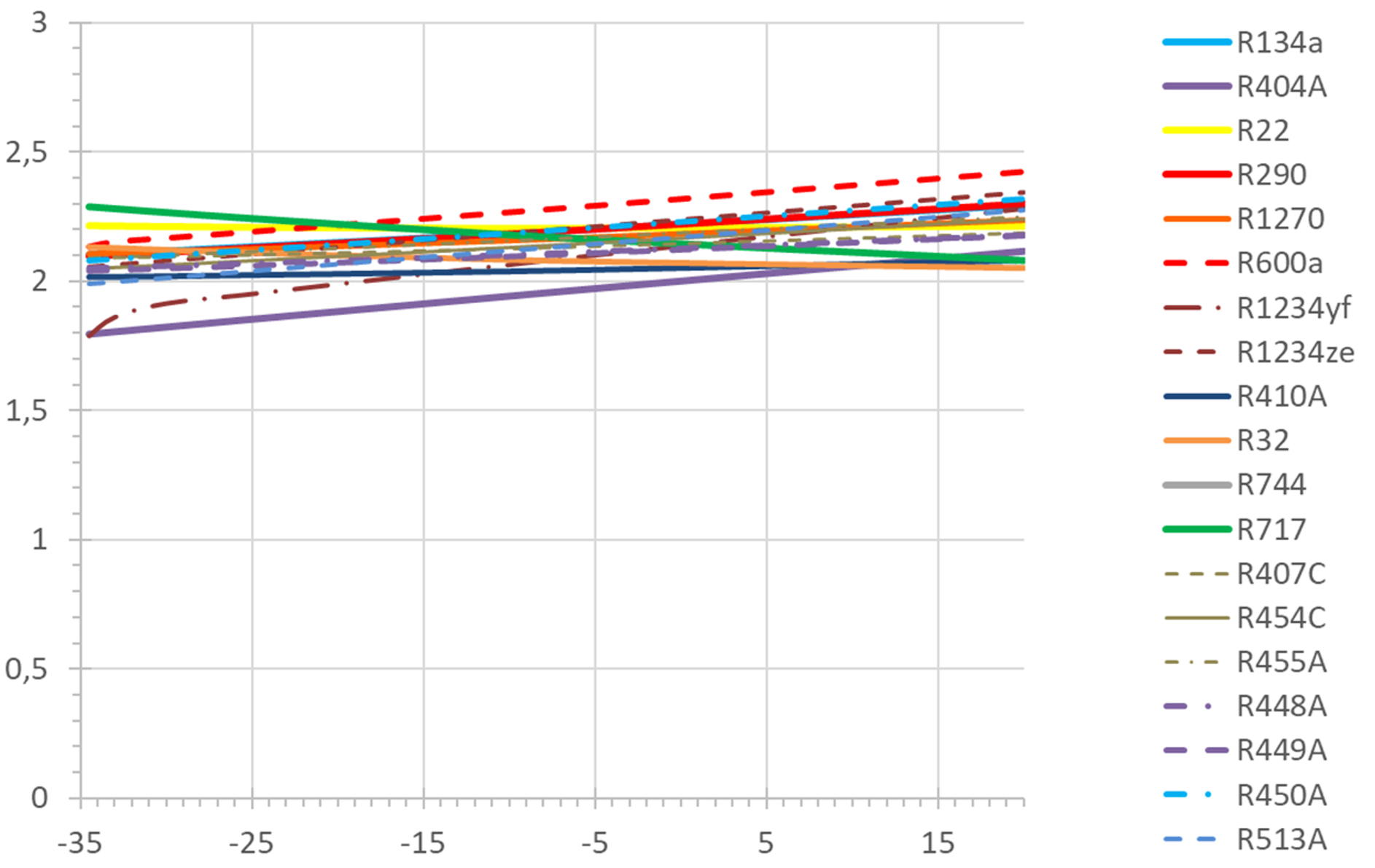
The variation of the fully useful superheat at single stage compression, constant evaporation temperature, condensing temperature and subcooling at condenser outlet, shows a differing behaviour of the selected refrigerants. This simulates the use of differently sized internal heat exchangers, between suction and liquid line.
- At very low superheat, R717 shows the highest COP, R404A the lowest. R22 has relatively high values.
- At very high useful superheat, R600a shows the highest COP, even slightly higher than R717 at lowest superheat. The lowest COP values are here found for R32 and R717, R22 is somewhere in the middle.
- R717 and R32 decrease in COP with increasing useful superheat. R22 and R410A stay basically constant. All other refrigerants considered here increase in COP with increasing useful superheat, most significantly R404A.
If the refrigerants are compared with the individually best possible superheat condition, the theoretical values for the COP vary ca. +/- 5% around the average. With system layouts like these, it is important to keep the pressure drop inside the internal heat exchanger so low that the efficiency advantages of the useful superheat are kept.
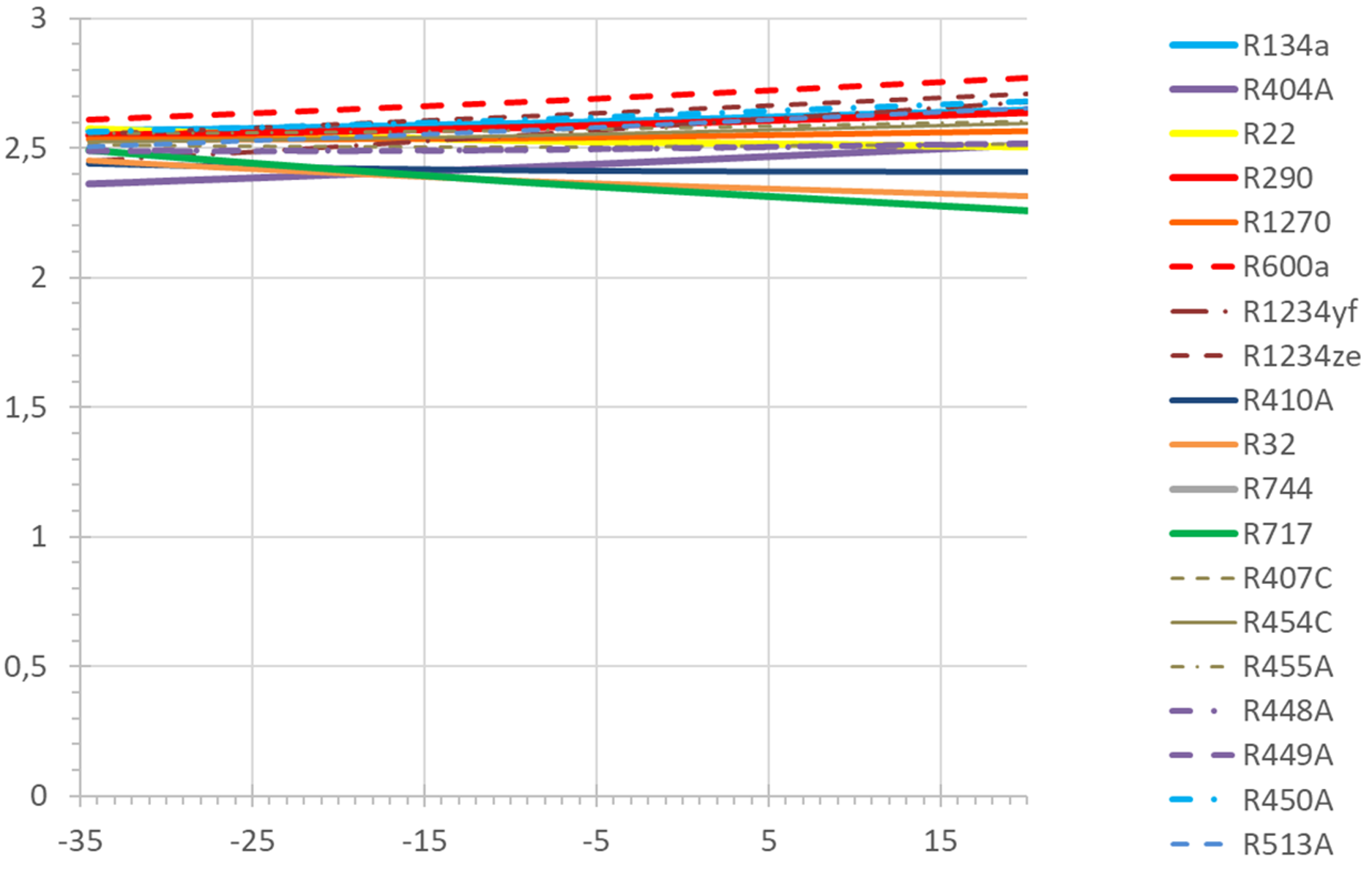
Making similar variations of the useful superheat in economiser operation, the curves look different: at very low superheat, the difference between the refrigerants has become lower. With growing useful superheat the difference theoretically becomes more significant. But at the chosen operating conditions, a suction gas temperature above approximately -5°C in the simple circuit process is not achievable due to the low liquid temperature, only on a compressor test rig. In the realistic range below -5°C suction gas temperature R600a generally shows the highest efficiency. With very low superheat R717 is somewhere in the middle of the bunch. R32 and R717 decrease more in COP with increasing superheat and end up with the lowest values of the considered refrigerants at -5°C suction gas temperature. R404A is about 5% below average at very low superheat and does not reach the average of the most other refrigerants at -5°C suction gas temperature.
In total, the economiser operation at low temperature application improves the COP values and shrinks the efficiency differences between the considered refrigerants.
Conclusions of the comparisons via property data
The comparisons at different operating conditions and their variations show the following: For the efficiency of a refrigeration system it is essential that it is designed and optimized in layout for the chosen refrigerant.
Many refrigerants have advantages in efficiency when using an internal heat exchanger for single stage compression, like the hydrocarbons, R404A or R134a, some even have disadvantages, like R717 or R32.
The impact of pressure drops on the suction side on capacity and efficiency is very similar for all considered refrigerants, measured in % of capacity or efficiency per % of pressure drop. Proven dimensioning rules can thus be applied further on.
All refrigerants benefit from economiser operation at high temperature lift, compared to single stage systems, e.g. in low temperature or heat pump applications. This is also valid if the discharge temperature is not forcing to use economising with the chosen refrigerant.
From the comparisons in total, it becomes obvious why R717 typically is operated with virtually no superheat and often in two stage or economised systems. Also, it becomes obvious why R600a is used in household appliances with internal heat exchanger and even in low temperature application in freezers.
The application of the results of these comparative calculations in real life depends, amongst other things, on the availability of components designed and optimised for this (Comparison based on component data).